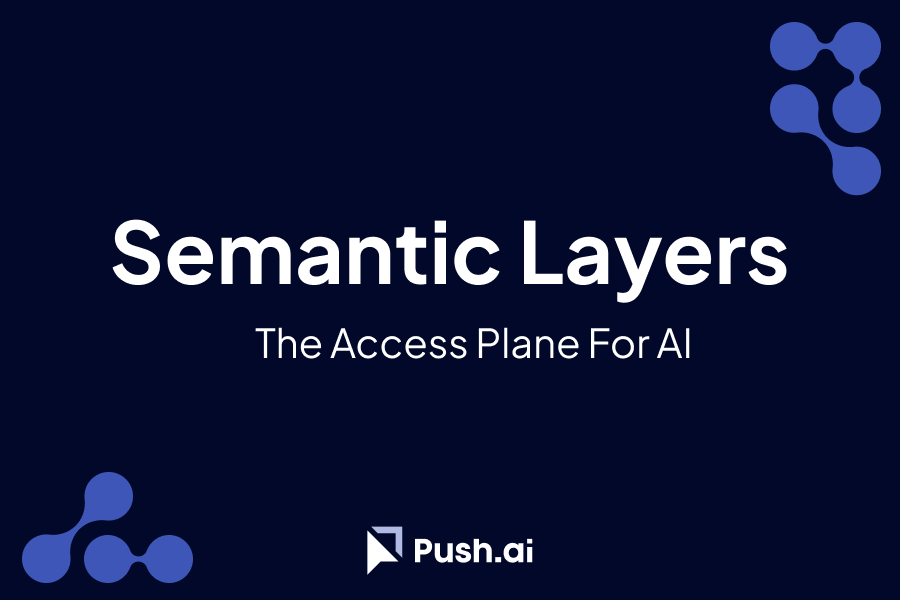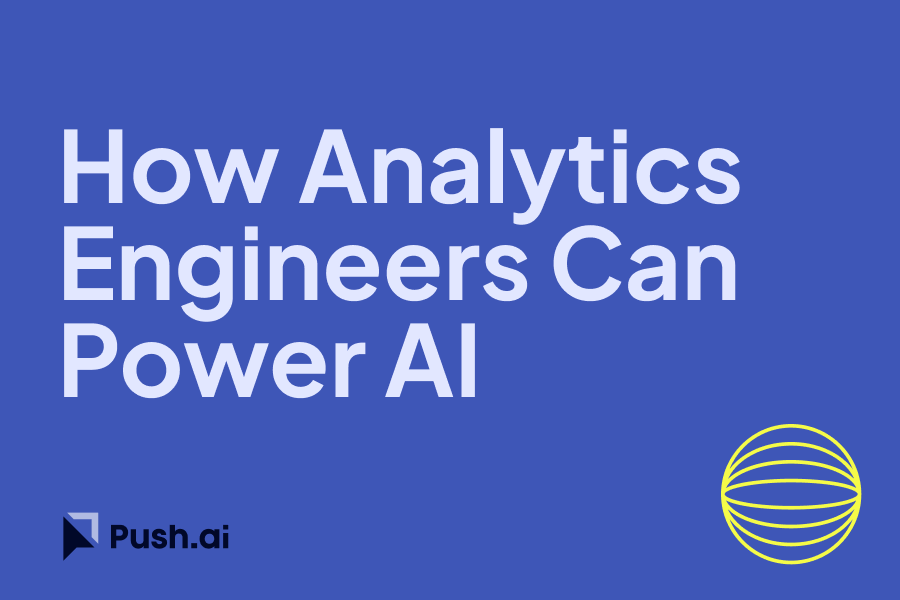In the past few years, interest in knowledge graphs has exploded. Everyone from tech giants to mid-sized enterprises is trying to connect their data in a way that makes it more intelligent — linking people, products, projects, and ideas into a single connected map of how their business works.
But there’s a hidden complexity behind every “smart” graph: how it’s built and maintained.
This post explores the main methodologies companies use to generate their graphs, what makes them powerful, where they break down, and how modern tools like Push.ai are helping teams manage them sustainably.
1. The Three Main Approaches to Bootstrapping a Knowledge Graph
While every organization’s starting point looks different, most fall into one of three broad approaches:
a. Top-Down (Schema-First)
This approach starts with a well-defined ontology — a formal model of entities, attributes, and relationships. Data is mapped into that schema manually or through rules.
It’s the approach most common in highly regulated or complex domains (finance, healthcare, government). The advantage is control and consistency, but it’s slow to start and hard to evolve.
Example:
b. Bottom-Up (Data-First)
Here, teams ingest existing data sources — relational tables, APIs, documents — and use pattern recognition, embeddings, or AI-assisted entity extraction to discover connections automatically.
It’s fast, exploratory, and often used in research or startups. The downside? Without careful curation, it can create noisy or redundant relationships.
Example:
c. Hybrid (Guided or Semi-Automated)
Most mature organizations evolve into a hybrid model — they use AI to generate candidate relationships and suggest new node types, while data teams review and approve them. This balances automation with human judgment, ensuring both scalability and precision.
Example:
2. Why This Process Is Powerful
When it works, a well-structured knowledge graph becomes a living representation of the business — something that no static dashboard or BI report can capture. It can:
- Connect structured and unstructured knowledge — merging CRM data with documents, tickets, and emails.
- Enable AI-powered retrieval and reasoning — allowing agents or copilots to answer nuanced questions like “Which customers are affected by our latest feature delay?”
- Provide lineage and explainability — revealing how insights are derived by tracing relationships.
- Create a semantic foundation for governance — aligning all analytics and AI tools to a consistent, unified model of the business.
This is why knowledge graphs are becoming the connective tissue between data warehouses, semantic layers, and the new wave of AI agents.
3. Where It Gets Hard
But bootstrapping a graph is only half the battle. Maintaining one is where most projects stumble.
Data Drift and Duplication
Over time, new data sources appear, naming conventions evolve, and relationships change. Without a robust feedback loop, the graph becomes stale or inconsistent.
Ontology Overload
Teams often over-engineer their schema early on — creating dozens of node types or relationships before knowing what matters. That complexity makes the graph harder to query and update.
Lack of Transparency
Many graph systems lack intuitive interfaces for editing or visualizing relationships. When only engineers can see and modify connections, business users lose trust and adoption lags.
Context Alignment
Even with AI assistance, models can misinterpret relationships if they don’t understand the business context — merging entities that look similar but represent different concepts (e.g., “Pipeline” in sales vs. “Pipeline” in DevOps).
4. The Push.ai Approach: A Curated, Business-Aware Graph
At Push.ai, we believe every organization deserves a living, editable business graph — one that blends the precision of data modeling with the intuition of human understanding.
Push.ai’s platform enables teams to:
- Visualize the graph interactively — see nodes and relationships in a rich editing experience that’s accessible to both engineers and analysts.
- Curate node types tied to the warehouse — connect your semantic layer (models, metrics, tables) with higher-level business entities like “Customer,” “Goal,” or “Product Initiative.”
- Edit and tune relationships dynamically — adjust how data connects as the business evolves, rather than rebuilding from scratch.
- Integrate context from your applications — link structured data from Snowflake or dbt with real-world signals from Slack, Jira, or Notion.
In other words, Push.ai helps you maintain your business graph — a hybrid of your analytical model and your operational knowledge base — without the complexity or fragility of traditional graph infrastructure.
Conclusion: From Data to Context
Every company’s journey toward AI maturity depends on one core capability: the ability to represent its business in context. Knowledge graphs — and the processes that build them — are how we get there.
Whether you start top-down with a defined schema, bottom-up with AI discovery, or somewhere in between, the key is to keep the graph alive. That means curating, editing, and connecting it continuously to your data warehouse and business systems.
Tools like Push.ai are designed to make that possible — turning the business graph from a static artifact into a living, navigable system of truth that both humans and AI can understand.


%201.svg)






